The final moments of the Cassini mission's 20-year voyage occurred on 15 September 2017, as the spacecraft sped towards its doom at 33.5km/s.
The bus-sized spacecraft passed briefly through Saturn’s brilliant, cobalt-blue skies, concluding one of the most spectacular scientific ventures in history.
When Cassini plunged into the ringed planet’s yellow-brown atmosphere, the seasonal blue sky was uncannily reminiscent of Earth’s.
A small reminder of the world where it was created.
The Cassini–Huygens mission (Huygens being the accompanying space probe that landed on Saturn's moon Titan) was led by NASA, the European Space Agency, and the Italian Space Agency.
But what was the Cassini mission, what did it do, and what were its biggest discoveries at Saturn?

Cassini's journey to Saturn
Cassini launched in October 1997 and travelled 3.5 billion km to reach Saturn, picking up gravitational boosts from Venus, Earth and Jupiter along the way.
It arrived in July 2004, and released the tiny Huygens lander down to the surface of the giant moon Titan in December of the same year.
Cassini went on to perform three extended phases of scientific study: in those 13 years it orbited the planet over 290 times, taking in Saturn’s equinox and part of its northern summer solstice as it did so.
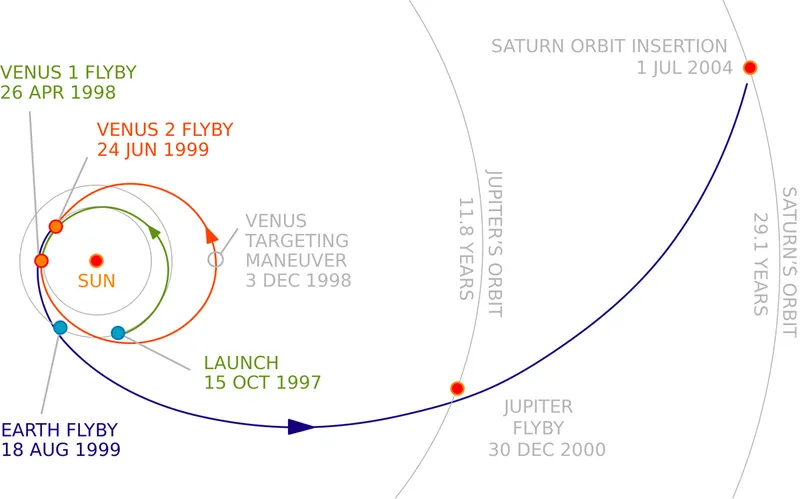
NASA Cassini mission's biggest discoveries
The NASA Cassini mission found seven new moons at Saturn and explored dozens of others
Their appearance ran the gamut from spherical to potato-shaped and from meatball-like to a kitchen sponge.
Some planet-sized, others equivalent to the dimensions of a football stadium.
More than a hundred flybys of Titan uncovered hydrocarbon rivers, lakes and seas, as well as a potentially habitable subsurface ocean.
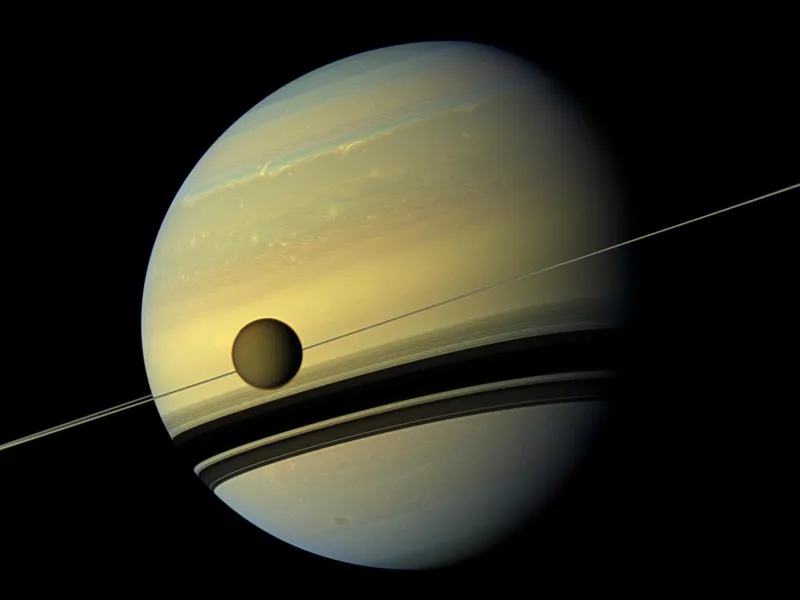
“Methane plays the role on Titan that water plays on Earth, carving river channels and filling Titan’s lakes and seas, while a subsurface ocean resides beneath Titan’s icy crust,” says Cassini project scientist Linda Spilker.
Cassini saw water-ice jets spurting from fissures at the south pole of the moon Enceladus.
These providea reservoir of material for Saturn’s E ring and betraying the existence of a deep global ocean, with all of the ingredients necessary to host some form of life.
This is arguably one of the greatest astronomy discoveries of recent history.
Still other moons, including the Death Star-like Mimas, with its prominent crater, might also possess oceans.
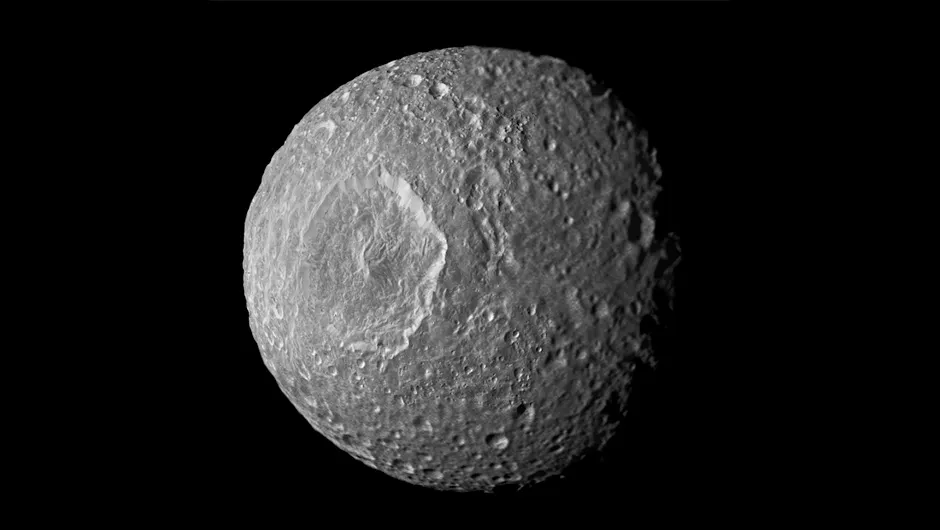
Tenuous oxygen atmospheres, trillions of times thinner than our own, were found around Rhea and Dione.
As for Saturn itself, the spacecraft witnessed a complex atmosphere on the cusp of seasonal change as the planet progressed along its 29-year orbit.
Cassini occupied a ringside seat, observing exotic storms and jet streams, including the 30,000km-wide north polar hexagon, whose winds peak at 320km/h.
It photographed violent lightning storms by day and night.
It mapped the planet’s magnetic field and observed the evolution of an annually recurring white storm in the northern hemisphere.
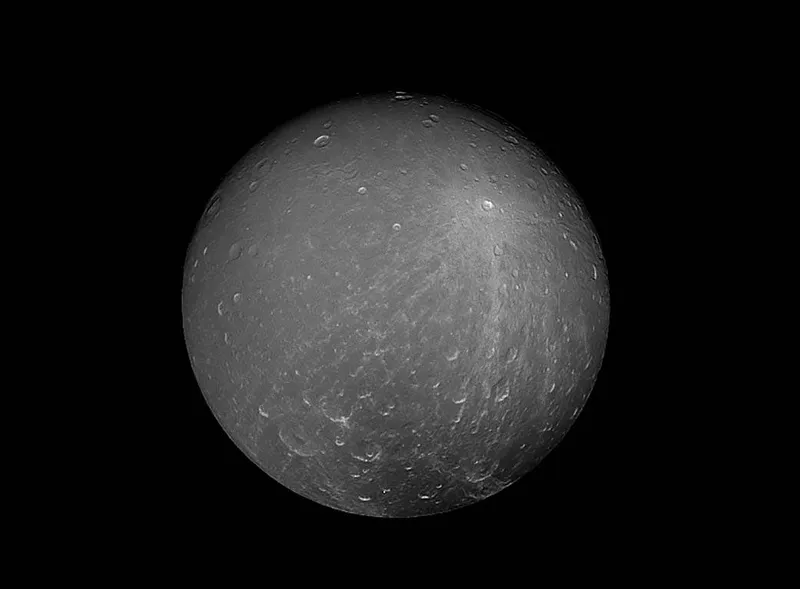
Cassini's ring discoveries
Pioneer 11 and the two Voyager spacecraft observed Saturn’s magnificent assemblage of water-ice rings more than three decades ago.
But it was not until the arrival of the NASA Cassini mission that their nature was more precisely understood.
Even as the spacecraft completed its Grand Finale of 22 ‘dives’ between the innermost edge of Saturn's rings and the gas giant itself, it revealed astonishing new details.

These included features likened to straw and propellers, on scales the size of the Earth’s tallest buildings.
The Voyagers observed strange radial ‘spokes’, up to 16,000km long.
The spacecrafts’ data on the spokes’ formation and dissipation lifecycles implied that they were indeed small particles, suspended high above the plane of the rings by electrostatic charging.
Cassini showed these spokes appeared and dissipated in a matter of hours.
Data suggested that they might represent a seasonal phenomenon throughout Saturn’s 29-year orbit, vanishing in midwinter and midsummer, and reappearing as the giant planet approaches the equinoxes.
More recently, Hubble's images of Saturn's ring spokes revealed these features in greater detail.
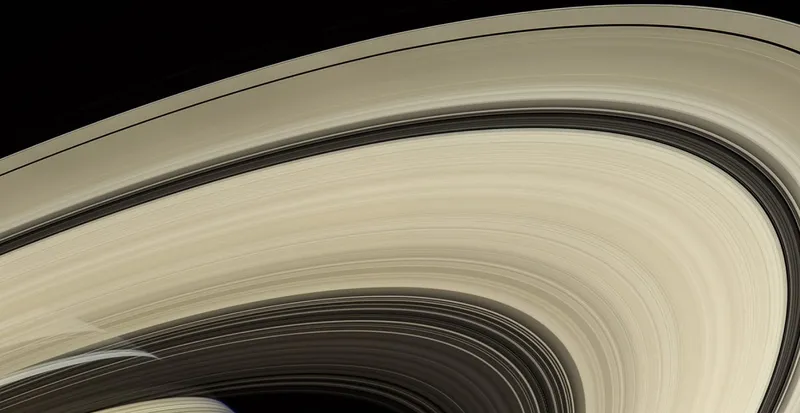
With a breadth of 282,000 km, the rings extend the equivalent of three-quarters of the distance between Earth and the Moon
And their dazzling reflectivity owes itself to the fact that they are composed of 99.9% water-ice, along with contaminants.
Cassini’s radar and visible observations – together with stellar occultations – have shown varying dimensions of ring particles, which extend from sand-like grains to mountain-sized boulders.
Cassini's Enceladus discoveries
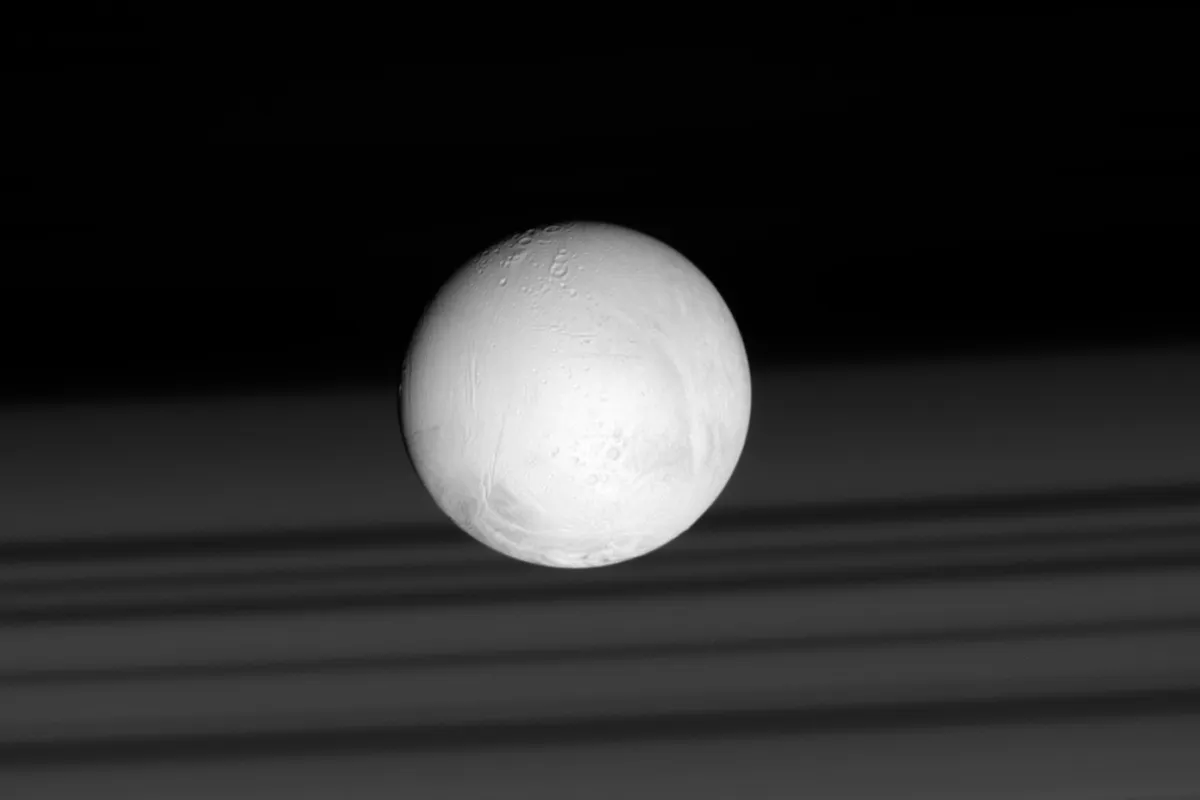
Reflecting 95% of the sunlight that strikes it and brighter than a field of freshly fallen snow, Enceladus’s youthful façade was first observed by the twin Voyager spacecraft.
That mission raised the possibilities of cryovolcanism and perhaps the existence of a life-sustaining ocean beneath its frozen crust.
A quarter of a century later, in 2005, the NASA Cassini mission turned its gaze to Enceladus and validated long-held theories that water-ice geysers in the polar region – gushing from deep fissures at hundreds of metres per second – were responsible for supplying many microscopic particles to Saturn’s E ring.

Later that year, Cassini passed directly through one of the plumes, revealing the presence not only of water vapour, but also volatiles such as nitrogen, methane and carbon dioxide.
This enhanced the possibility that some form of hydrothermal activity could be at work deep within Enceladus.
It strengthened theories that the tiny moon could harbour a salty subsurface ocean ripe for nurturing microbial life.
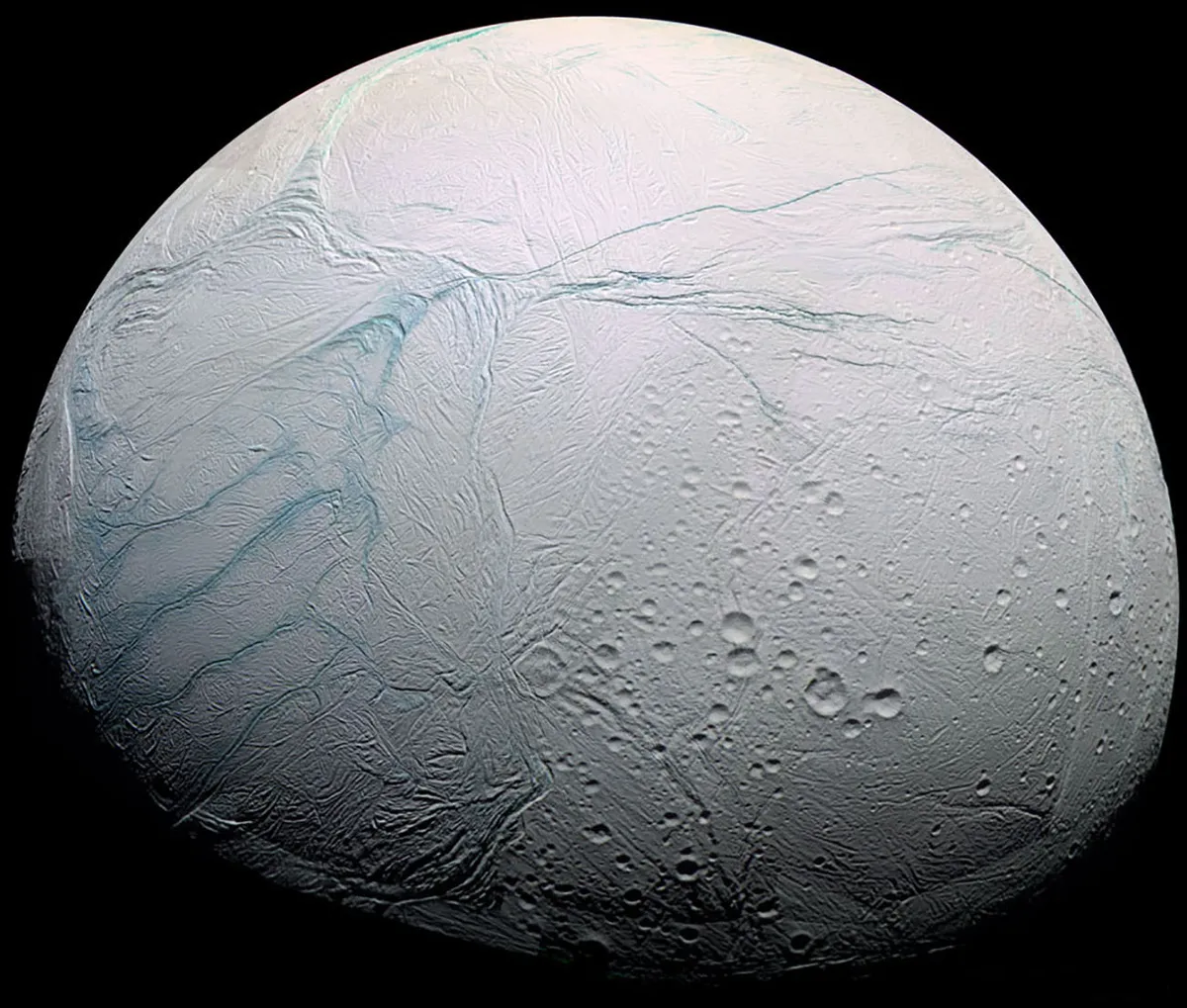
Plumes of salty particles from so-called ‘tiger-stripe’ fissures at the south pole and gravitational field data from Cassini strongly inferred the existence of a salty ocean, perhaps up to 10km deep.
"Cassini’s revolutionary findings at tiny Enceladus include a subsurface global, salty ocean containing organics, ammonia, hydrogen and silicates, with hydrothermal vents on its seafloor," says Spilker.
"These discoveries have fundamentally altered many of our concepts of where life may be found in our Solar System."
Huygens probe's landing on Titan
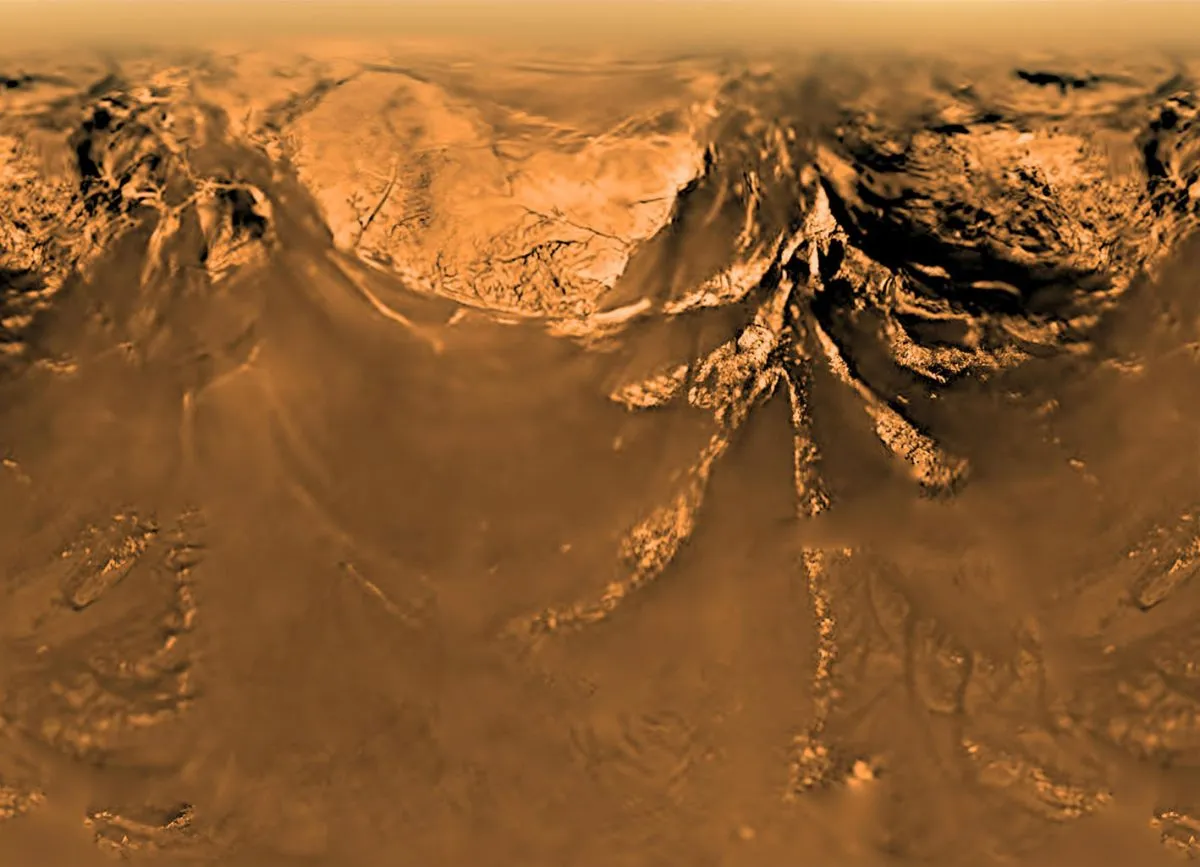
Deep beneath the murky orange clouds of Saturn’s large moon Titan lies an Australia-sized plateau called Xanadu.
Since 14 January 2005, it has been home to ESA’s tiny Huygens probe.
Until then, the very nature of Titan’s surface – whether liquid or solid – was open to considerable debate.
Huygens was designed to survive a landing on mountainous or flat terrain, and even in a lake or sea.
The Huygens spacecraft separated from Cassini on Christmas Day 2004 and coasted for three weeks to its destination.
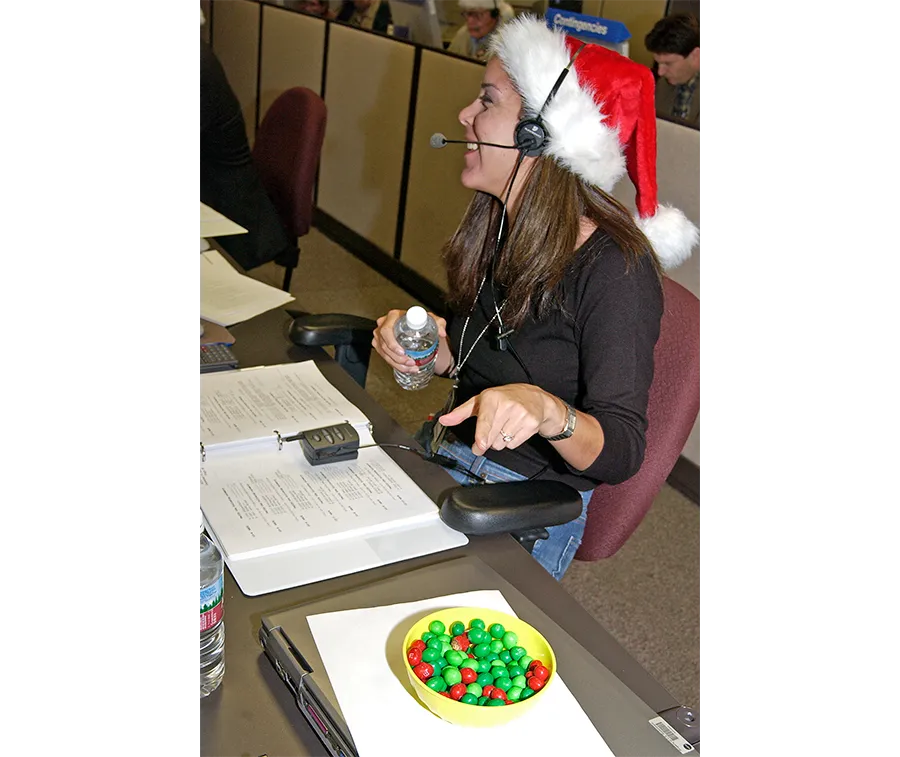
Shortly before entering Titan’s atmosphere, a wake-up timer brought its six instruments online.
Descending via parachute, it was buffeted by vigorous eastward-blowing winds, diminishing to gentler gusts as it neared the surface.
From an altitude of 15km, its images seemed to indicate an area of drainage channels.
These perhaps lead to a liquid methane ‘shoreline’, together with tendrils of hydrocarbon ground-fog.
However, Huygens landed on solid ground, kicking up a cloud of organic aerosols and leaving a 12cm indent.
It bounced, slid, wobbled a few times, then came to a stop.
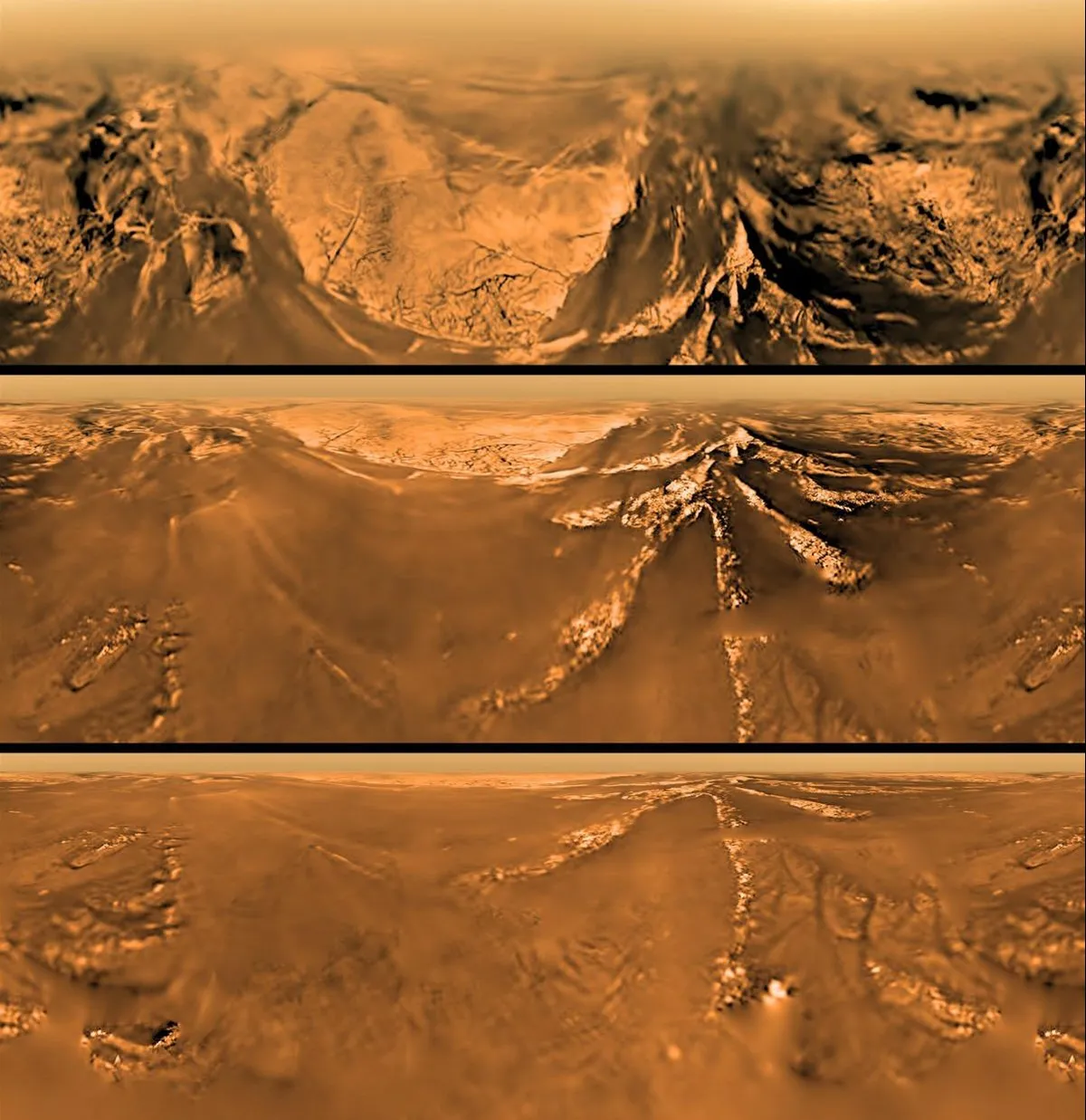
For 90 minutes, the probe took a look at its gloomy environs, littered with hydrocarbon-coated water-ice pebbles, typically rounded and fist-sized.
Early notions of a sticky, clay-like composition were later revised to be a sort of icy ‘sand’.
Hauntingly, Huygens’ on-board microphone provided the first audible sounds from another celestial body, recording the roaring of Titan’s wind during descent before its batteries ran dead.
How the Cassini mission ended
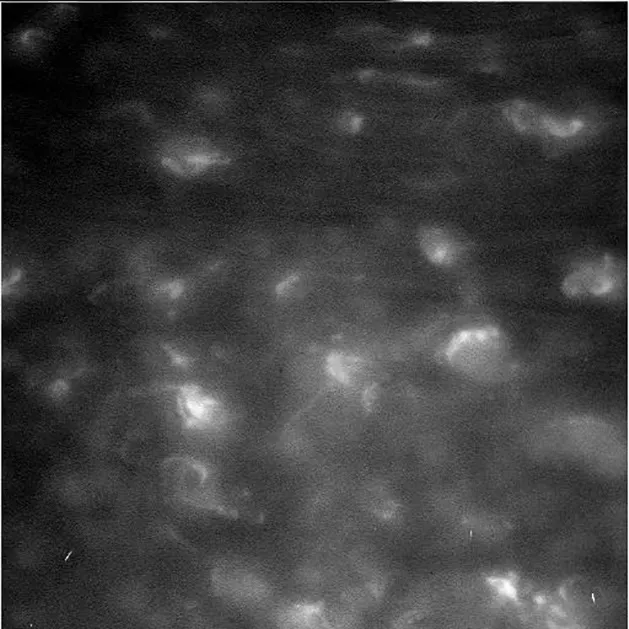
Several end-of-mission scenarios were considered, including a prohibitively long trek back to Jupiter, killing Cassini off through an impact with Saturn’s rings or moons.
Or entering a semi-stable graveyard orbit.
For the aging spacecraft, none of them promised to be scientifically profitable.
And as its fuel dwindled, another worry arose.
The risk of a long-dead and out-of-control Cassini someday hitting and contaminating pristine Enceladus did not bear thinking about.
A safe disposal was imperative.

Saturn’s hydrogen-rich atmosphere provided that means of disposal, as well as offering the potential to gain new insights into the formation of the giant planets.
Specifically, an enigmatic region of liquid metallic hydrogen, deep inside the gaseous planet, is thought to power Saturn’s magnetic field.
The result was the Grand Finale: a multi-month campaign that required the spacecraft to execute 22 death-defying ‘ring dives’ between the planet and its rings from April to September 2017.
On five of those dives, Cassini would actually enter the upper atmosphere, approaching within 1,700 km of Saturn’s one-bar level, roughly equivalent to sea level pressure here on Earth.
"This planned conclusion for Cassini’s journey was far and away the preferred choice for the mission’s scientists," says Spilker.
"Cassini would make some of its most extraordinary observations at the end of its long life."
Early in 2016, the spacecraft completed five manoeuvres to drastically reshape its orbit from an equatorial one into a higher inclination.

Ring grazing
In November 2016, as part of the NASA Cassini mission, series of 20 ‘ring-grazing’ orbits commenced.
During these, Cassini hurtled within a thousand kilometres of the F ring – the outermost boundary of Saturn’s dazzling necklace – every week for almost five months.
At this distance, it could directly sample particles from the rings for the first time and resolved features as large as the tallest buildings on Earth.
The ring grazing phase ended on 22 April as Cassini gained a gravitational tweak from Titan to establish conditions for the Grand Finale.
Four days later, moving at 34.4km/s, it made its initial dive through a gap between Saturn’s cloud-tops and the inner edge of the innermost D ring.
This positioned Cassini closer to the planet and its rings than ever before.
As a precautionary measure, its high-gain antenna was used to shield the delicate scientific instruments against particle impacts.
But the region proved surprisingly dust-free.
It was even nicknamed “the big empty” by Cassini project manager Earl Maize.

Ring dives
Over the following weeks, the spacecraft dived through the rings every 6.5 days.
It imaged their radial extent at breathtaking resolution, measuring Saturn’s gravitational and magnetic fields.
And extensively mapping its northern and southern hemispheres.
Rhythmically looping out to 1.3 million km from the planet, then sweeping inbound for another dive, the spacecraft’s last five orbits from mid-August 2017 promised great drama, great risk and even greater reward.
At this stage, Cassini was so close to Saturn that it would physically pass through its tenuous upper atmosphere.
It sampled various species of molecular hydrogen and helium, examining small-scale structures and observing powerful polar aurorae and fast-moving vortices.
As it completed its 292nd and final full orbit on 12 September 2017, Cassini performed a distant flyby of Titan.
The moon’s gravity offered a ‘goodbye kiss’, adjusting the spacecraft’s course and causing it to plunge deep into Saturn’s atmosphere.
The final, partial orbit ended at 10:44 UT on 15 September, and Cassini began its descent just south of the equator, in the dead of the Saturnian winter.
Cassini's mission end
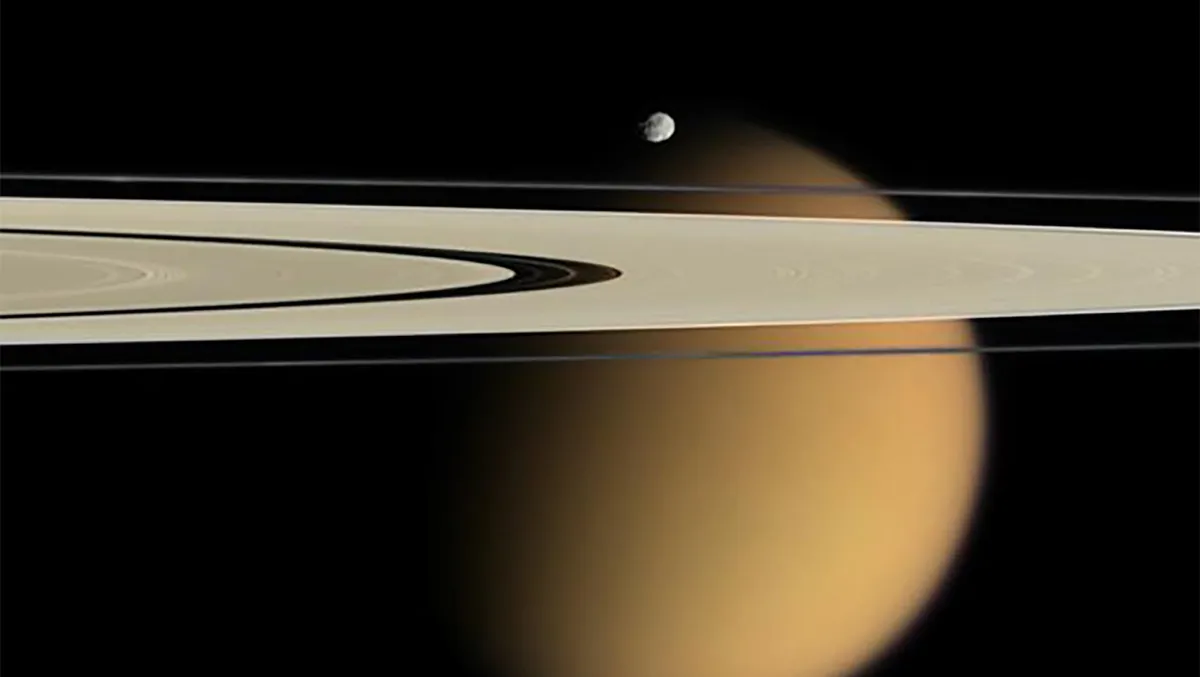
Back on Earth, we knew nothing of the speccraft’s end for over an hour.
Travelling at the speed of light, across the 1.2 billion km gulf between Saturn and Earth, its final data reached the electronic ears of NASA’s Deep Space Network at 12:07 UT.
A bittersweet end to one of our longest space missions.
Cassini vanished from existence and became part of the planet it had spent its life exploring
We can modify a line from the famous poet Rupert Brooke, and be certain that some tiny corner of a foreign gas giant will remain forever Earth.
A version of this article originally appeared in the September 2017 issue of BBC Sky at Night Magazine.